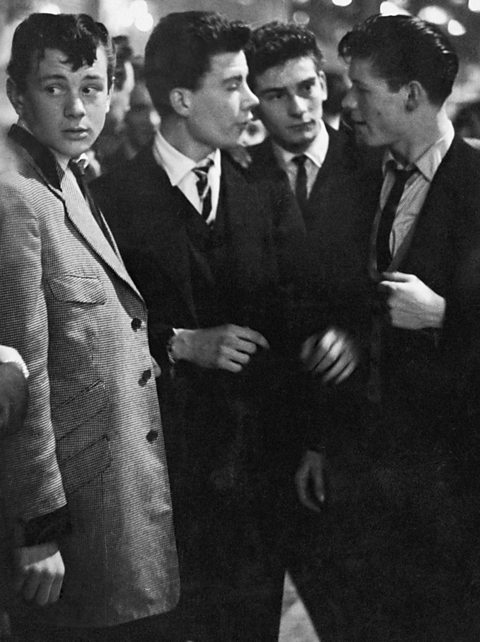Teenage rebellion
The Slab Boys is set in the post-war era of the 1950s, which saw great change in the lifestyle and culture of the United Kingdom.
The years after the war saw rationingDuring and after the war certain goods were in short supply. Therefore, items such as petrol, bacon, butter and sugar were limited to a certain amount per person. come to an end, and the people of Britain began to enjoy increased prosperity and freedom. The younger generation began to challenge social and cultural customs and their small rebellion lead to the birth of the 'teenager'.
Americanisation

Increased access to movies, television and magazines introduced American culture to Britain. Greater prosperity led British people to mimic the mass consumerism of America. Luxury items, such as cars and televisions, were now considered necessary items and Hollywood stars, such as James Dean (his poster hangs on the slab room wall), were idolised.
Teddy Boy
The influx of American culture and growing youthful defiance against social norms saw the birth of youth subcultures. The 'Teddy Boy' scene enjoyed huge popularity. Teddy Boys had their own dress code – 'brothel creeper' shoes, drape jackets, loose-collared shirts, slim ties, tight 'drain pipe' trousers and greased up, quaffed hair. All these are reflected in the costuming and styling of many of characters, particularly Phil.
Rebellion
Phil's rebellious attitude and desire to escape the 'hum-drum' of working class life is representative of this movement. He reflects the changing attitudes of young British people towards their place in society and the authorities which put them there.
This rebellion is evident in Phil's need to challenge authority (Mr. Curry) and escape the humdrum lifestyle of a slab boy. This rebellion also reinforces the generation gaps explored throughout the play.